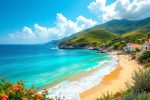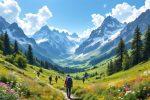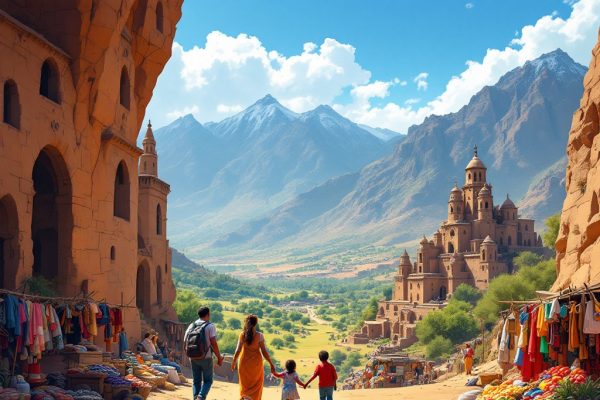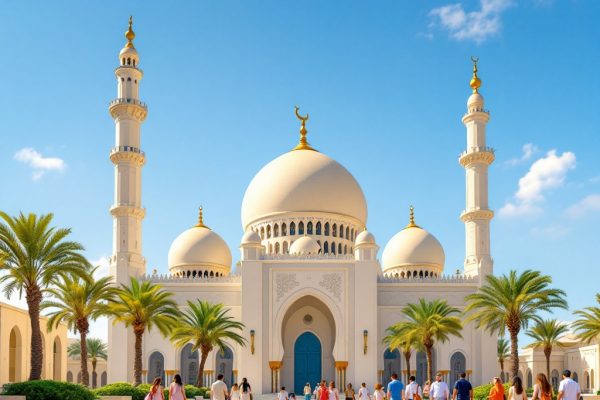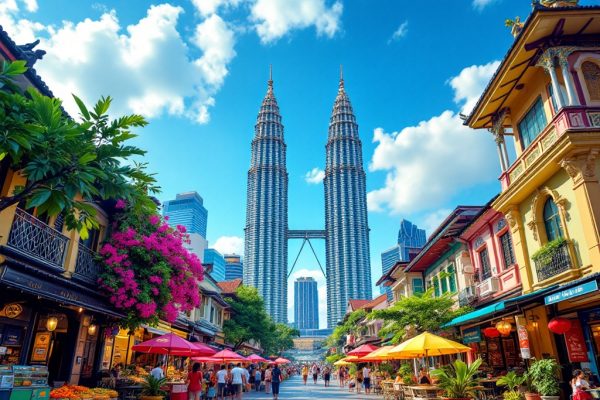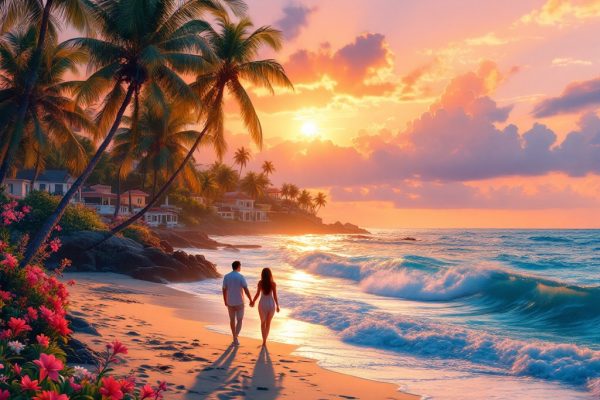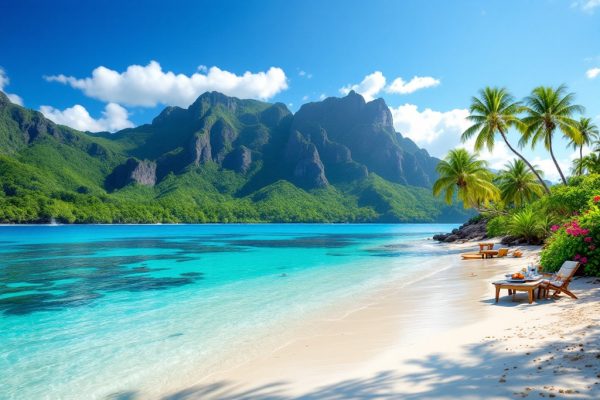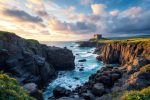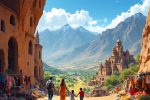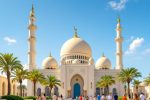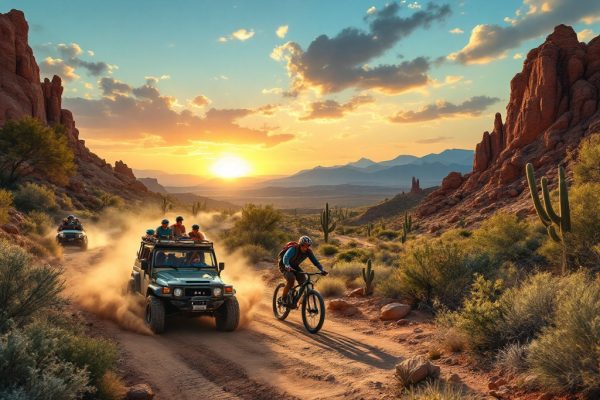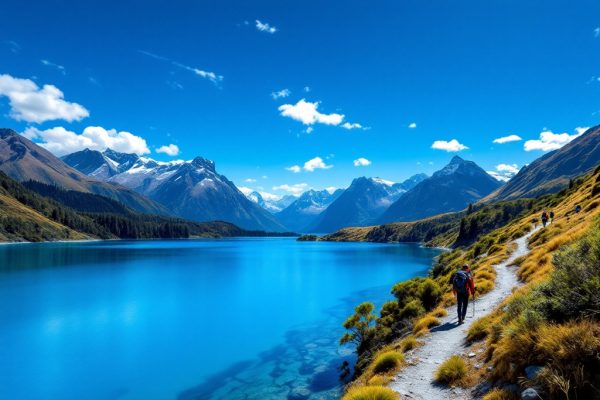Planning a Trip to Norway: Tips and Tricks
Dream of exploring majestic fjords and vibrant cities? Discover Norway! From the breathtaking Lofoten Islands to the bustling capital of Oslo, this guide unveils the best travel tips and tricks. Learn how to navigate Norway’s unpredictable weather, utilize its efficient public transport, and save on food and accommodation. Uncover hidden gems and plan your dream Norwegian adventure today!
Important information
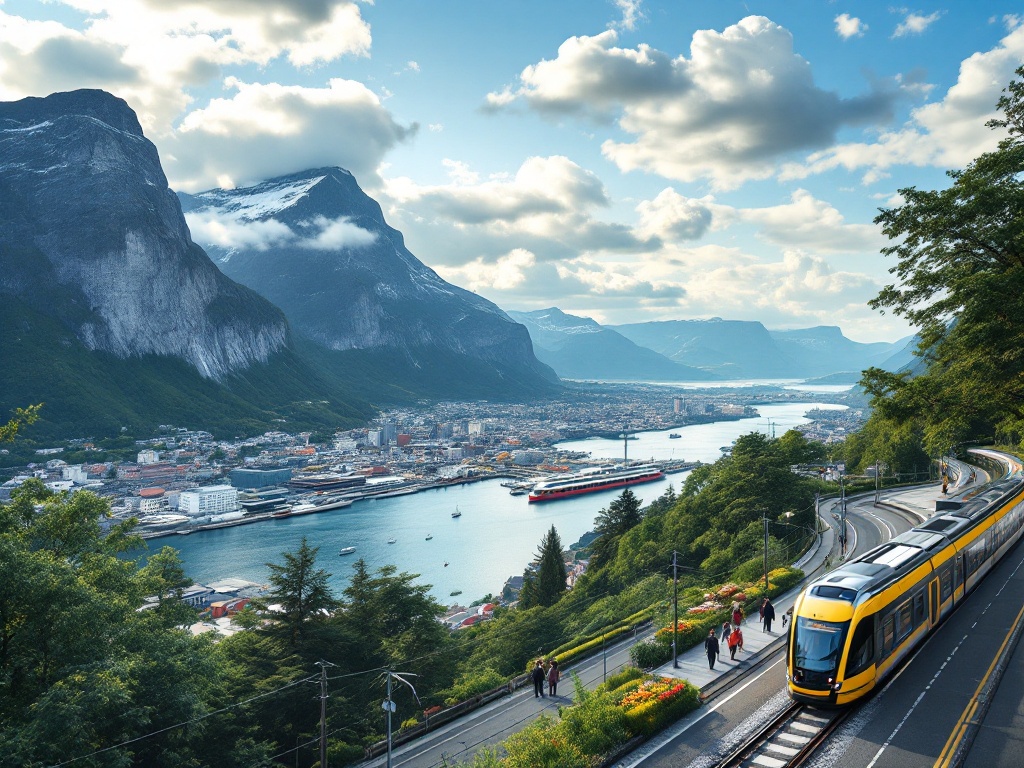
- Norway offers diverse landscapes, from fjords to cities like Oslo and Bergen. Consider exploring the Lofoten Islands as well.
- Travel can be expensive. Save money by traveling during the shoulder seasons (spring or fall), using public transport, and preparing some meals.
- Pack for all weather. Layering is key, with waterproof and windproof outerwear essential. Sturdy shoes are vital for hiking.
- Norway has a comprehensive public transport system. Trains, buses, and ferries offer scenic routes and access to remote areas. A rental car offers more flexibility.
- Book accommodations and transport in advance, especially during peak season, for better deals and availability.
Planning a Trip to Norway: Tips and Tricks
Planning a trip to Norway? Here’s what you need to know:
Destinations
Explore Norway’s diverse landscapes, from the majestic fjords to vibrant cities. Consider visiting:
- The breathtaking fjords.
- The vibrant capital city of Oslo.
- The charming city of Bergen.
- The dramatic Lofoten Islands.
Travel Tips
Travel times in Norway can be lengthy due to the terrain and ferry connections, so a flexible itinerary is essential. This allows you to adapt to Norway’s unpredictable weather and enjoy spontaneous adventures. Consider traveling during the shoulder seasons (spring or fall) for pleasant weather and fewer crowds.
Budget-Friendly Travel
Norway can be expensive, but affordable travel is possible. Here’s how:
- Travel during the shoulder seasons (spring or fall) for lower prices and fewer tourists.
- Utilize Norway’s efficient and affordable public transport.
- Choose budget-friendly accommodation options like hostels or guesthouses.
Saving on Food
Food costs can add up quickly, but there are ways to save:
- Prepare some of your own meals.
- Look for free attractions or those offering discounts.
How to Start Planning Your Trip
Consider the time of year you’d like to travel.
Decide on your ideal trip length.
Pick some exciting destinations.
Deciding on Destinations and Length of Stay
Southern Norway
Explore charming towns and stunning fjords in Southern Norway. This region is perfect for a week-long adventure.
Western Fjords
Experience breathtaking landscapes and majestic mountain hikes in the Western Fjords. This area offers unparalleled natural beauty.
Northern Norway
Journey north to witness the mesmerizing midnight sun or the magical northern lights during winter. This region offers unique natural phenomena.
Lofoten Islands
Discover dramatic scenery and picturesque fishing villages in the Lofoten Islands. This area is perfect for those seeking stunning visuals.
Shorter Trips
For shorter trips, focus on a single region to fully immerse yourself in its unique character. This allows for a more in-depth experience.
When planning your trip to Norway, consider your interests, desired activities, and the length of your stay to craft a truly personalized Norwegian experience.
Research for an Unforgettable Experience
Research is the key to unlocking extraordinary travel experiences. Discovering hidden gems and crafting unforgettable trips starts with thorough planning. Explore less-known attractions tailored to your interests, allowing you to venture beyond typical tourist hotspots. Immerse yourself in local culture by savoring authentic cuisine and embracing unique traditions. Find distinctive accommodations that reflect the spirit of your destination. Consider attending a local festival or joining a specialized tour for a deeper cultural immersion. Thorough research not only prepares you for your adventure but also manages expectations, minimizing potential travel disappointments and maximizing your enjoyment. Plan ahead and unlock a truly enriching travel experience.
Best Time to Visit Norway
If you are a hiker or outdoor adventurer, the best time to visit Norway is during the summer months (June to August). You can enjoy warm, sunny days perfect for exploring the stunning natural landscapes.
For those fascinated by the aurora borealis, plan your trip between late September and early April for optimal viewing opportunities. Witnessing this celestial display is a truly unforgettable experience.
Winter sports enthusiasts will find Norway a paradise from December to March. Hit the slopes for skiing and snowboarding, enjoying the thrilling winter activities.
Each season in Norway offers unique experiences. Choose the time of year that best suits your interests and travel style.
Understanding Norway’s Seasons
Spring (April-May)
Spring brings milder temperatures, blossoming flowers, and lengthening days.
Summer (June-August)
Summer offers long daylight hours, sometimes even a full 24 hours of sun in the north, with average temperatures between 15-25°C.
Autumn (September-October)
Autumn transforms the landscape into a vibrant tapestry of color, the air becomes crisp, and the tourist crowds diminish.
Winter (November-March)
Winter blankets the country in snow. Days shorten, but opportunities abound for skiing, snowboarding, and witnessing the magical dance of the Northern Lights.
Seasonal Activities: What to Do and When
Spring (April-May)
As the snow melts, hiking trails and kayaking routes open up, revealing a landscape dotted with vibrant wildflowers. It’s a truly lovely time to visit.
Summer (June-August)
Experience the midnight sun, providing extended daylight perfect for hiking, cycling, and exploring the fjords. Embrace the coastal culture and try island hopping.
Autumn (September-October)
Witness the mesmerizing northern lights, crisp air, and colorful foliage. It’s an ideal backdrop for hiking and fishing.
Winter (November-March)
The region transforms into a snowy paradise for skiing, snowboarding, and dog sledding. The northern lights are at their peak, and unique experiences like ice fishing and snowshoeing await.
Weather Considerations and Packing Tips
Packing for Norway’s unpredictable weather requires a strategic approach. Layering is essential due to dramatic temperature fluctuations. A waterproof and windproof outer layer is crucial, especially during spring, autumn, and coastal trips. While lighter clothing is suitable for summer, pack a sweater for cooler evenings. Winter necessitates thermal underwear, fleece jackets, and accessories like a hat, gloves, and a scarf. Finally, sturdy, comfortable shoes are vital for any adventure, particularly hiking.
Spring, Autumn, and Coastal Excursions
- Waterproof and windproof outer layer is crucial.
- Layering is essential.
- Sturdy, comfortable shoes are vital.
Summer
- Lighter clothing is suitable.
- Pack a sweater for cooler evenings.
- Sturdy, comfortable shoes are vital.
Winter
- Thermal underwear is necessary.
- Fleece jackets are recommended.
- Accessories like a hat, gloves, and a scarf are essential.
- Sturdy, comfortable shoes are vital.
Transportation Options in Norway
Discover Norway’s comprehensive public transport system, featuring:
- Trains offering scenic routes, especially along the fjords.
- Buses reaching even remote areas.
- Ferries connecting communities across the water.
- Domestic flights for swift long-distance travel.
Travel passes offer unlimited travel on selected routes.
Choosing between a rental car and public transport depends on your travel style.
- A car provides flexibility for countryside exploration.
- Public transport offers stunning views and access to remote locations.
Consider your itinerary and preferences to make the best choice.
For remarkable journeys, explore Norway’s train network. Experience breathtaking rides through mountains and along fjords. Popular routes include:
- The Bergen Railway, traversing a high mountain plateau.
- The Flåm Railway, descending steeply into a lush valley.
Planning a road trip? The Atlantic Road and Trollstigen offer unforgettable scenic drives. Discover countless other routes throughout the country. Plan your journey based on your interests and available time.
Exploring Norway’s Efficient Transport Network
Travel in Norway is easy thanks to a variety of transportation options. Trains efficiently connect major cities, offering scenic views during the journey. Buses reach charming small towns and remote areas. Ferries are essential for experiencing the magnificent fjords. For independent travel, especially in rural areas, consider renting a car.
Should You Rent a Car or Use Public Transport?
A rental car unlocks spontaneous exploration, allowing you to uncover hidden gems and scenic byways at your own pace. Flexibility is key here.
Public transit efficiently covers long distances. However, it may not reach those charming, off-the-beaten-path locations. Efficiency is its strength.
Weigh your priorities: flexibility versus efficiency, and select the travel mode that best suits your adventure.
Planning Scenic Rail Journeys and Road Trips
Embark on an unforgettable Norwegian adventure, experiencing its stunning landscapes by car or train. Explore the breathtaking National Scenic Routes by car for unparalleled vistas. Alternatively, discover Norway’s spectacular terrain through unique scenic rail journeys.
Accommodation: Booking Hotels and Unique Stays
Planning your trip to Norway? Booking your accommodations in advance, especially during peak season, is highly recommended. This not only secures your preferred lodging but can also help you find better deals. Norway offers a diverse range of accommodations to suit every budget and preference.
Budget-Friendly Options
Looking for affordable options? Consider hostels or budget-friendly hotels for a comfortable stay without breaking the bank.
Luxury Stays
Indulge in Norway’s luxurious hotels for a truly pampered experience.
Unique Accommodations
- Experience the charm of a rorbu, a traditional fisherman’s cabin.
- Enjoy a unique stay in a lighthouse or experience a farm stay.
Eco-Friendly Options
Eco-conscious travelers can choose from a selection of eco-certified hotels.
Alternative Stays
Explore a wide variety of apartments, houses, and unique rentals through platforms like Airbnb.
Booking Early: Securing the Best Deals
Booking accommodations and transportation in advance can lead to considerable cost savings and better availability, especially during popular travel periods. Pre-booking flights and other transport options is equally advantageous for your budget.
Eco Certified Hotels: Sustainable Travel Choices
Planning an eco-conscious Norwegian adventure? Choose an eco-certified hotel for a truly green getaway. These accommodations adhere to rigorous environmental standards, significantly minimizing their carbon footprint and championing water conservation and waste reduction. Many utilize renewable energy sources and prioritize locally sourced food. By selecting such a hotel, you support sustainable tourism, lessening your own environmental impact. However, certifications vary; look for reputable ones like the Nordic Swan Ecolabel or Green Globe. Your booking helps preserve Norway’s breathtaking landscapes for generations to come.
Benefits of Choosing Eco-certified Hotels:
- Minimized carbon footprint.
- Water conservation and waste reduction.
- Use of renewable energy sources.
- Prioritization of locally sourced food.
- Support for sustainable tourism.
Look for Reputable Ecolabels:
- Nordic Swan Ecolabel.
- Green Globe.
Exploring Airbnb and Other Unique Stays
Looking for a unique place to stay in Norway? Airbnb offers personalized accommodations, such as lighthouses, cozy fisherman’s cabins, and eco-friendly farms. These options provide not only a place to sleep but also local insights and a deeper connection with Norwegian culture. Discover authentic Norway with Airbnb.
Top Travel Itineraries and Routes
Explore Norway’s breathtaking landscapes, beginning with the Geiranger-Trollstigen route’s stunning panoramic views. Enhance your journey with a captivating fjord cruise, exploring the majestic Nærøyfjord, Geirangerfjord, or Sognefjord.
Island Hopping
Discover Norway’s rich coastal heritage through island hopping. The Lofoten Islands will mesmerize you with their dramatic peaks and charming fishing villages.
Vega Archipelago
Experience the unique culture of the UNESCO-listed Vega Archipelago.
Atlantic Road
Journey across the Atlantic Road, an engineering marvel connecting coastal islands through a series of bridges.
Røros
Step back in time and explore the charming UNESCO World Heritage town of Røros.
Beautiful Scenic Routes and Fjord Cruises
Experience Norway’s beauty with a scenic drive along routes like the Atlantic Road and Trollstigen. For an unforgettable experience, embark on a cruise through the majestic fjords. Popular options include the Nærøyfjord, Geirangerfjord, and Sognefjord, where you can witness breathtaking waterfalls and charming villages. Imagine yourself on deck, surrounded by towering cliffs and vibrant village life.
Island Hopping and Coastal Culture
Embark on an unforgettable island-hopping adventure along Norway’s stunning coastline. Discover a diverse tapestry of islands, each with its unique charm. Immerse yourself in the rich coastal culture, explore quaint fishing villages, and delve into fascinating maritime history at local museums. Indulge in the freshest seafood, savoring the true taste of Norway.
Hidden Gems and Lesser-Known Attractions
Experience Norway’s breathtaking beauty and rich history with these must-see destinations:
- Explore the Vega Archipelago, a UNESCO World Heritage site, and discover its unique birdlife and charming fishing villages.
- Journey back in time in Røros, a preserved copper mining town showcasing Norway’s captivating past.
- Witness the dramatic landscapes of Senja Island, with its jagged peaks and vibrant fishing communities.
- Hike to Pulpit Rock (Preikestolen) for unforgettable fjord vistas.
- Be mesmerized by the beauty of the Lofoten Islands, renowned for their dramatic mountains and picturesque villages.
Budget Travel Tips for Norway
Stretch your travel budget further with these savvy tips.
Transportation and Accommodation
Embrace public transport like buses and trains, often a cheaper alternative to car rentals. Consider budget-friendly lodging like hostels, cabins, or campsites.
Food
Preparing your own meals significantly cuts down dining costs. Explore local eateries or supermarket groceries. Take advantage of lunch specials for extra savings.
Activities and Timing
Explore free activities: hiking, visiting public beaches, or free city walking tours. Travel during shoulder seasons (spring and fall) for lower prices on flights and accommodations.
Deals and Discounts
Booking flights and accommodations in advance can secure even better deals. Keep an eye out for discounts and special offers to maximize your budget.
Maximizing Your Travel Budget
For the best of both worlds – better deals and fewer crowds – consider visiting during the shoulder seasons of spring or fall. Packing light avoids checked baggage fees, freeing up your funds for more exciting adventures. Embrace the beauty of free activities like hiking scenic trails or exploring local parks. In vibrant city centers, take advantage of free walking tours to discover hidden gems.
- Travel during shoulder seasons.
- Pack light to avoid baggage fees.
- Enjoy free activities like hiking and exploring parks.
- Take advantage of free walking tours.
Food expenses can quickly escalate, but exploring local grocery stores and markets allows you to prepare some of your own meals, saving significantly. Seek accommodations in less touristy areas or consider budget-friendly options like camping and hostels. Booking ahead, especially during peak season, secures the best deals on flights and accommodations.
- Explore local markets and prepare your own meals.
- Consider budget-friendly accommodations.
- Book ahead for the best deals on flights and accommodations.
For shorter journeys, bus or train travel often outperforms flying in terms of cost. City passes can also be a worthwhile investment, offering discounts on attractions and transportation.
Booking Cheap Flights and Transport Tickets
Book flights and transportation in advance to secure the best deals. Last-minute reservations often come with higher prices. Pre-booking guarantees your travel arrangements, especially during peak seasons, saving you money and reducing travel anxiety.
Affordable Meals and Local Eateries
Eating affordably in Norway is possible. For lower prices, choose local eateries and smaller restaurants over larger, upscale establishments. Explore classic Norwegian dishes like fish soup or fish cakes, which are both delicious and budget-friendly. Grocery stores are great for picnic supplies or ingredients for cooking your own meals. Bakeries and cafes offer affordable breakfast and lunch options. Enjoy Norway’s beauty without breaking the bank.
Tips for Eating Affordably in Norway
- Opt for local eateries and smaller restaurants, which tend to have lower prices than larger, upscale establishments.
- Explore classic Norwegian cuisine, such as fish soup and fish cakes, known for being both delicious and budget-friendly.
More Money-Saving Tips
- Utilize grocery stores for stocking up on picnic supplies or ingredients for preparing your own meals, saving money on dining out.
- Take advantage of bakeries and cafes for budget-friendly breakfast and lunch options.
Safety and Cultural Considerations
Safety Advice for Travelers in Norway
Norway is known for its safety and welcoming atmosphere. However, taking simple precautions can further enhance your security. Be mindful of your surroundings and keep your valuables secure, utilizing hotel safes for essential items such as passports and electronics.
Mountain Safety
When exploring Norway’s mountains, remember to follow safety guidelines. Check weather forecasts before heading out and always inform someone about your hiking plans.
Respecting Local Customs
Demonstrating respect for local customs and traditions can greatly enrich your travel experience. Learning basic Norwegian phrases can be beneficial.
Emergency Numbers:
- 112: general assistance,
- 113: medical emergencies,
- 110: fire-related incidents.
Basic Safety Precautions for Travelers
Share your travel itinerary with someone at home for added safety.
Avoid walking alone late at night, especially in poorly lit or unfamiliar areas.
Be mindful of your belongings in crowded places to protect against pickpockets.
If you choose to drink alcohol, do so in moderation.
Familiarize yourself with basic Norwegian phrases, such as “hjelp” (help), and local emergency numbers, like Norway’s 112.
Above all, stay alert and trust your instincts. If a situation feels unsafe, remove yourself immediately. Your safety is your top priority.
Cultural Etiquette and Considerations
Norwegians value politeness and a relaxed atmosphere. Maintaining direct eye contact is seen as a sign of honesty, and a handshake is the customary greeting. Expressing gratitude with a frequent “Takk” (thank you) is appreciated. While tipping isn’t mandatory, rounding up the bill or leaving a small gratuity (5-10%) for exceptional service is a thoughtful gesture. Using first names is perfectly acceptable, even in formal settings. Punctuality is essential. If invited to a Norwegian home, a small gift such as flowers or chocolates is a kind gesture. Given the prevalence of outdoor activities, comfortable attire is recommended. Lastly, be mindful of noise levels in public spaces.
Language Tips: Communicating in Norwegian
Sprinkling a little Norwegian into your travels can greatly enhance your experience. While English is widely spoken, locals appreciate the effort of using their language. Simple greetings like “Hallo” (hello) and “Ha det bra” (goodbye) go a long way.
- Hallo (hello),
- Ha det bra (goodbye),
- Takk (thank you).
If you need to, “Snakker du engelsk?” (Do you speak English?) will help. But even using basic words like “Ja” (yes) and “Nei” (no) demonstrates your willingness to engage with their culture. This small gesture can create a much more positive interaction.
- Ja (yes),
- Nei (no).

